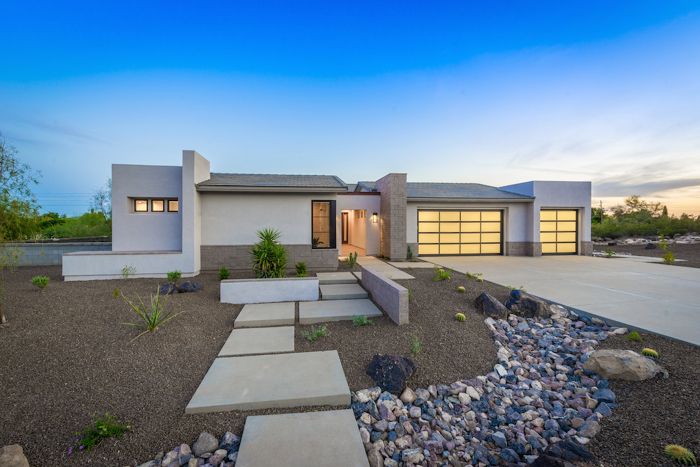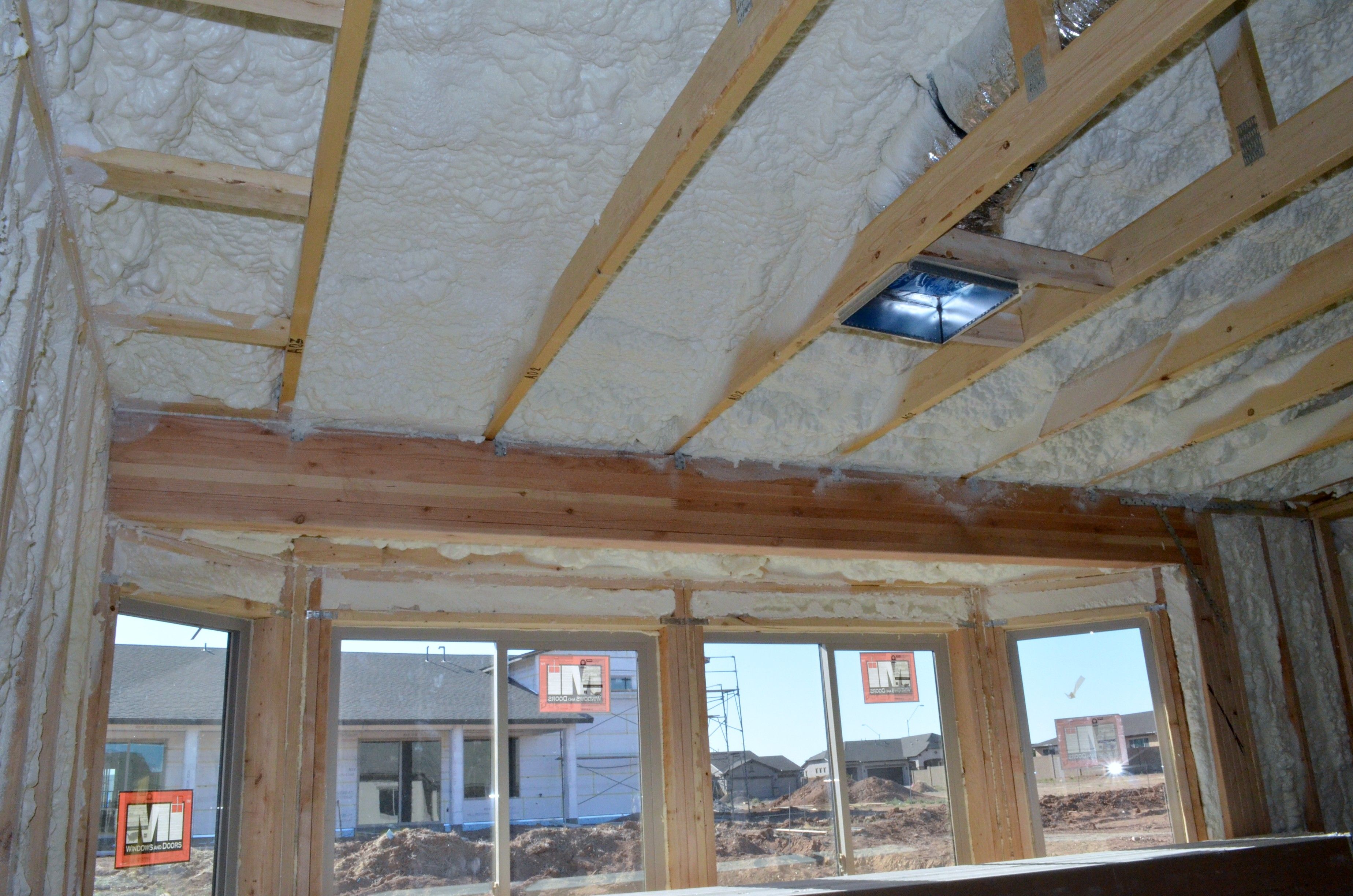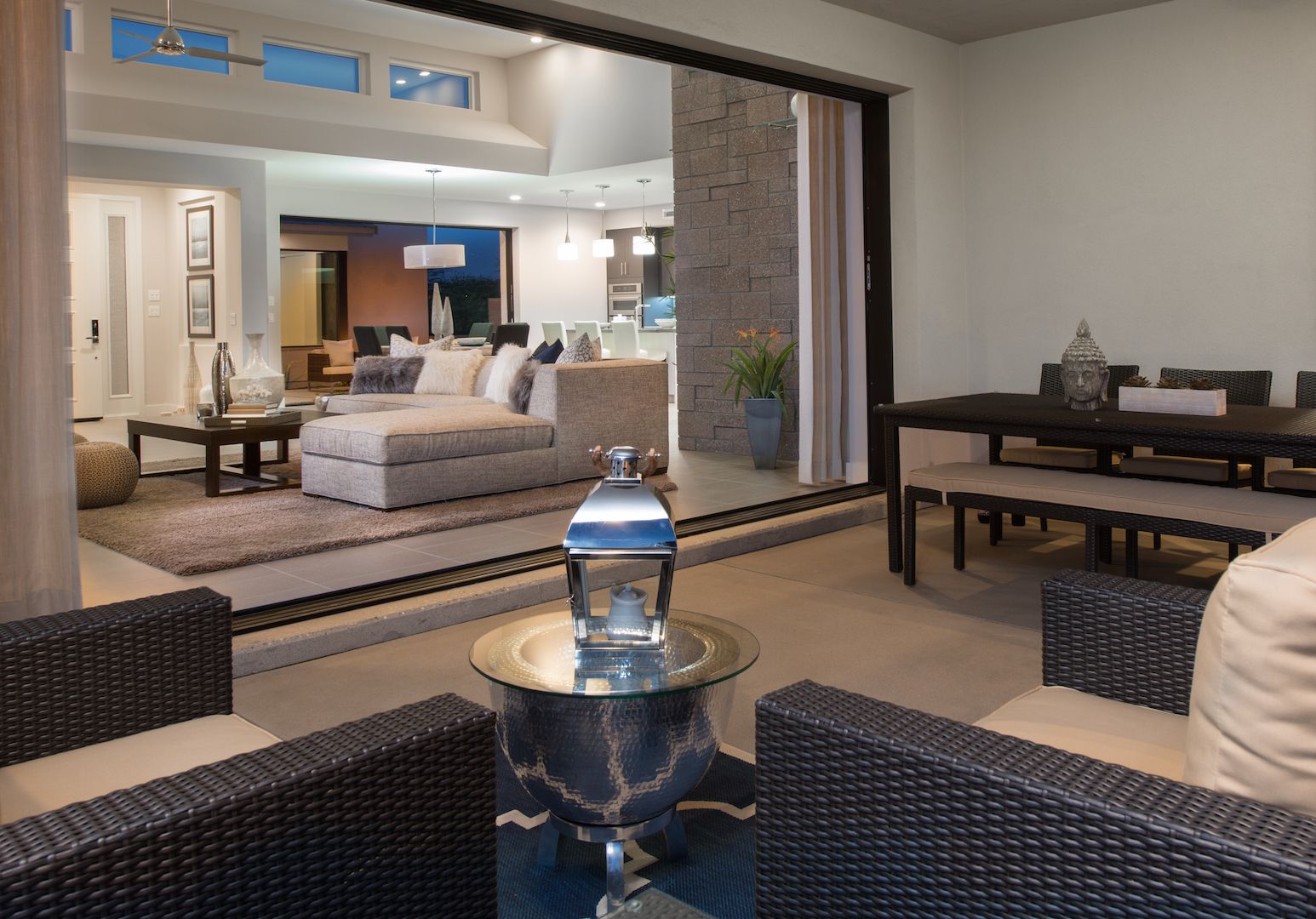
Arizona builder Mandalay Homes hopes to build 120 houses next year, increasing by one-third the number of completions in 2015. No matter what the price tag, every one of them will get exactly the same energy-efficiency features.
For the third year in a row, the builder picked up a Housing Innovation Award from the Department of Energy, this year sharing “grand winner” status with KB Home of Los Angeles in the competition’s production housing category. Last year, Mandalay won an Innovation Award for a development of 100 DOE Zero Energy Ready homes, and the year before that it was recognized for an affordable housing project of 14 houses.
After turning to high-performance construction just a few years ago, Mandalay says it is now capable of building a house twice as efficient as a standard new home for $4 or less extra per square foot. Every house the company builds will have a HERS index of 50 or less.
“It’s a cornerstone of our business model,” says Mandalay construction manager Geoff Ferrell.
“We build a lot of places. The home that won the award is a $750,000 house in an upscale neighborhood, but we also build in some more rural areas where we’re building smaller homes, not quite as tricked out as that one, starting in the mid-$200,000s. As far as performance and energy efficiency we put all of the exact same components in. We use all the same techniques, all the same materials, and we guarantee that all of our homes are going to come in under 50 HERS, regardless of the price point or there they’re being built.”
Building to DOE Zero Energy Ready specs
Mandalay has projects underway in two two climate zones, 2B and 4. Winters are balmy by New England or Minnesota standards, but an average summer in Phoenix would quickly wear most people out (every single day this past August, for example, the high temperature topped 100°F, reaching 117°F on Aug. 14.) Rainfall averages about 8 inches a year.
Among requirements for meeting the DOE Zero Energy Ready standard, houses must be certified to Energy Star 3.0, have a building envelope that meets or exceeds requirements of the 2012 International Energy Conservation Code, have all ducts inside the thermal boundary, and meet certain provisions of the EPA WaterSense program.
Mandalay does it with 2×6 exterior walls framed on 16-in. centers and insulated with 3-1/2 in. of open-cell spray polyurethane foam, R-4 of continuous foam on the exterior, and a sealed attic with R-31 of open-cell foam applied to the bottom of the roof deck. According to a DOE description of the project, houses are built on post-tensioned concrete stab insulated with R-8 of rigid foam on the perimeter but nothing underneath.
Airtightness in this year’s award winning home was 1.66 air changes per hour at a pressure difference of 50 Pascals. Other features include tankless water heaters, high-efficiency gas furnaces with 15 SEER air-conditioning coils, energy-recovery ventilators, double-pane windows with a solar heat gain coefficient of 0.22, drought-tolerant plantings with drip irrigation, LED lighting, and a photovoltaic system rated at 8000w. Like all of its houses, this one is prewired for a 240v electric-vehicle charger.
Its HERS index was -2.
Working with subs to improve efficiency
The company built 90 homes this year and had of between $55 million and $60 million. It hopes to build 120 houses next year, and it’s had to work hard with its subcontractors to meet its efficiency and production goals.
When Mandalay began building high-performance housing three years ago, it quickly realized air-sealing building envelopes would be key. Ferrell said the company went to one framing sub and asked if he could help meet Mandalay’s airtightness goals–and promptly got turned down. The framer said no, Ferrell called, because he didn’t trust his crews to do it. Mandalay went to its painting subcontractor instead, who was more than happy to seal around pipes and wires, and at top and bottom plates.
“A painter doesn’t seem like a natural trade for that, but we went to the trade that was willing to do it, and paid them for it. We got them interested in what we were doing,” Ferrell said. “By working with the trades and getting them invested in our goals, and making them feel a part of that process, it makes it a lot easier.
“If you go to a trade and say, ‘I need you to do this,’ they’re going to fight you every time. You’re never going to get what you want.”
Later, the framer who had originally declined the extra work came back and said he’d changed his mind. “We had to say, no, sorry, you missed the boat,” Ferrell said. But, he added, the company can’t afford to “shove a trade aside.” In some towns where Mandalay is building there aren’t a lot of subcontractors to choose from, so the idea is to build good relations and work hard to get them interested in what you’re doing.
What the buyers want
The awards must look great on the walls at Mandalay headquarters, but Ferrell concedes most homebuyers don’t come in the door asking about a HERS rating or what blower-door tests are showing.
“Most buyers don’t care how much insulation is in the wall, or that open-cell spray foam gives them superior air-sealing over batts,” he said. “You know, they don’t care. They want the benefit of it. They want lower energy bills, and fewer allergies over the course of the year. That’s what they’re interested in.”
There have been more prospective buyers who have heard of the awards the company has won. Yet the company is in a highly competitive business where buyers are often willing to spend more on granite counters or travertine tile but still pinch their pennies on high-performance features like PV systems.
“There is a small minority of buyers that say they want to spend $15,000 on a photovoltaic system. Yes, we have those buyers,” Ferrell said. “But by and large, they’re buying for the community, they’re buying for the floor plan, they’re buying for the features and finishes they’re going to live with.
“The balancing act we play is we have to build a beautiful home, a home that fits in the marketplace for the area we live in, that’s attractive to the buyers we’re trying to attract, and do all those energy things we’re committed to doing.”
Read more: http://www.greenbuildingadvisor.com/blogs/dept/green-building-news%2A#ixzz3uQBwpIlq
Follow us: @gbadvisor on Twitter | GreenBuildingAdvisor on Facebook
Fine Homebuilding Recommended Products
Fine Homebuilding receives a commission for items purchased through links on this site, including Amazon Associates and other affiliate advertising programs.

8067 All-Weather Flashing Tape

Handy Heat Gun

Reliable Crimp Connectors


























